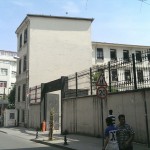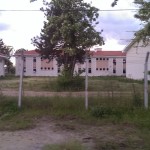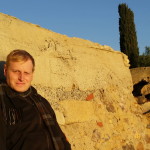
Turkey’s border with Syria is not the only border region in the country where people are dying[1]. Along the so-called “green border” of the European Union the last few years have witnessed a rising tide of migrants forced back into Turkey, mostly by European police forces. Today, Europe’s politicians are using Turkey as a gatekeeper. This is an old strategy, and has been ineffective so far. Europe has not been putting up the funds needed to enforce it, even if the EU has been investing in Turkish border technologies and camp facilities for some time. To understand the recent developments and their possible effect on the future, it is important to review the practice now used by the EU. Parts of the policy concept were developed by the European Stability Initiative (ESI) and introduced as the “Merkel Plan“[2]. The recent progress of the agreement has cemented the power of the Justice and Development Party (AKP)-government before the stunned eyes of its domestic opposition—even before the recent elections in Turkey were held or even before it was signed.
In the middle of September, migrants organized themselves in Istanbul[3], Edirne and other parts of Turkey. They demonstrated for a legal way across the border, one that would not require them to pay smugglers huge amounts of money and then drown in the sea while crossing over to Europe. While this struggle took place at the European border, a group of Syrians and Iraqis lamented in front of Amnesty International that the Turkish border police had violently pushed them back from the Syrian-Turkish border. They also protested the death of 22 people traveling with them. Later, some of them were forced to sign a paper stating that they had sought to leave the country voluntary. During this time, the number of people who wanted to arrive in Europe before the winter came increased dramatically. At this tipping point, Europe became more intensely engaged in dialogue with Turkey about securing its borders. This became visible for instance when high-ranking German politicians were visiting Turkey to talk with the country’s interim government about migration.[4] The warm welcome accorded to Erdoğan by the President of the European parliament, Martin Schulz, sent the same message.

For more than two weeks the huge self-organized migrant movement #crossingnomore remained stuck at the borders of Bulgaria and Greece and at the biggest bus station of Istanbul. Basically they were waiting for Europe to opens its borders, but this never happened. The Turkish police forced most of the protesters to go to Istanbul or Izmir. The authorities arrested five people identified as “activists,” who were expelled from Turkey some weeks later. While they were detained in jail, Turkish state media framed them as provocateurs, spies and terrorists. Hundreds of people who did not wish to cooperate with the police got arrested in Edirne or other places and were released some days later, while others were forced to leave the country. Amnesty International stated that more than 150 from the protesters were put in the EU-financed detention center of Erzurum[5], and 80 of them were deported to Syria in November[6]. To ensure their immobility in the process, the Turkish police had taken their papers and passports. Such acts of repression were very clear and visible messages to European politicians that the Turkish state has the power to act.

Meanwhile, in October, the European Commission came up with a joint action plan that included opening six “refugee reception centers” with EU money. Another point was to strengthen the “cooperation with Bulgaria and Turkey” and build up a common center at Kapitan Andreevo (Bulgaria), next to Kapikule (Greece). A part of the following 17-point plan of action, released after the “Meeting on the Western Balkans Migration Route” on October the 25th, included the “full use of the potential of the EU-Turkey readmission agreement”, signed in 2013 and approved in 2014. A bilateral readmission agreement between Turkey and Greece was already signed in 2001 and has been in force since 2002. Since the “visa liberalization roadmap“, which would allow visa-free entry for Turkish citizens to the EU as of October 2016, is directly connected with the readmission agreement, Greece could immediately start with a return of unwanted migrants back to Turkey. In addition, the meeting agreed on “upscaling the Poseidon Sea Joint operation in Greece” and “reinforcing FRONTEX support at the border between Bulgaria and Turkey”. On the 24th of November 2015, another press release from the European Commission came out, according to which the EU will provide about the 3 billion euros for refugee facilities in Turkey. Some of the volunteers in Greece received evidence, even before the signing of the agreement on November 29th, that Turkey had already begun to hinder migrants trying to flee the Turkish coasts to Europe. This practice was reported as well by Human Rights Watch. After the meeting in Brussels, the president of the European Council, Donald Tusk, said the following:
We expect a major step towards changing the rules of the game when it comes to stemming the migration flow that is coming to the EU via Turkey. Our agreement setsout a clear plan for the timely re-establishment of order at our shared frontier.[7]
Only hours later, the Turkish coastguard immediately used full force to detain 752 migrants at the Çanakkale coasts. Later it was reported that about 1,500 migrants were brought to Çanakkale’s Ayvacık detention center, which has been in use since 2014 and has only a small capacity. There, they were forced to sign some papers promising to leave the country in one month. The latest number of people staying in the detention center was 247 while others were distributed to other detention centers in Turkey.[8]
The situation for many migrants in Turkey is not good since geographic limitations make it impossible for non-Europeans to get refugee status. Many are working in the textile, construction and care sectors or gastronomy, for very low wages[9]. Therefore, their wish to leave the country towards Europe is still on the mind of many migrants in Turkey because of the lack of official work permits, adequate health care and education possibilities[10].
The political elite of Europe is building up walls, talking about suspending the Schengen agreement, trying to install a selective system of people on the external borders, reinforcing the power of FRONTEX and begging neighbouring countries to stop people who are on the run. Finally, it seems that Turkey is fulfilling the long-lasting dream of a crumbling Europe, but this ‘dirty deal’ with Erdoğan is also a helpless symbol of the lack of European solidarity during a political and economic crisis and won’t likely stop the pointless dying on the doorstep of Europe.
 Mathias Fiedler is an MA student at the University Göttingen, Germany. He researches migration management in Bulgaria and Turkey and is focused on the crossing points of humanitarianism, labor regimes and asylum. Currently he is enrolled at the Boğaziçi University in Istanbul.
Mathias Fiedler is an MA student at the University Göttingen, Germany. He researches migration management in Bulgaria and Turkey and is focused on the crossing points of humanitarianism, labor regimes and asylum. Currently he is enrolled at the Boğaziçi University in Istanbul.
[1] For events at the Turkish-Syrian Border, read the statement of Amnesty International from November 2015: http://tinyurl.com/hpyhpd3 (last accessed December 2015). ↩
[2] The same doubtful think tank came up with a paper that is called “Turkey as a ”safe third country” for Greece”, which should Greece give the opportunity to deport every migrant back to Turkey; online: http://tinyurl.com/j63kmla (last accessed December 2015). ↩
[3] My article on #crossingnomore in September 2015, online: https://lefteast.org/busofhope-from-istanbul/ (last accessed December 2015). ↩
[4] German’s Foreign Minister Frank-Walter Steinmeier visited Turkey in September, chancellor Angela Merkel met Erdoğan in October.
[5] Global Detention Project (2014): http://www.globaldetentionproject.org/countries/europe/turkey/introduction.html (last accessed December 2015). ↩
[6] Urgent Action from Amnesty International in November 2015: http://tinyurl.com/zv7g9kx (last accessed December 2015). ↩
[7]See the video of Aljazeera Media Network: https://www.youtube.com/watch?v=flCoIsXUn6E
[8]Information taken out of the article that Ali Çelikkan wrote for the Cumhuriyet at the 6th of November 2015; online: http://www.cumhuriyet.com.tr/haber/turkiye/443975/_Multeciler_savasin_ortasina_atilamaz_.html (last accessed December 2015). ↩
[9]Fiedler, Mathias (2015): (Transit-)Migration. Strategies within and beyond Fortress Europe. In: Mapping Global City Istanbul. URL: http://www.kaee.uni-goettingen.de/mapping-istanbul/project/strategies-within-and-beyond-fortress-europe/ (last accessed December 2015). ↩
[10] For a detailed report concerning Syrian refugees, see the last report of Kemal Kirişci (2014): Syrian refugees and Turkey’s challenges: Going beyond hospitality, Washington/D.C.: Brookings Institution 2014, http://www.brookings.edu/~/media/research/files/reports/2014/05/12-turkey-syrian-refugees-kirisci/syrian-refugees-and-turkeys-challenges-may-14-2014.pdf (last accessed December 2015). ↩

